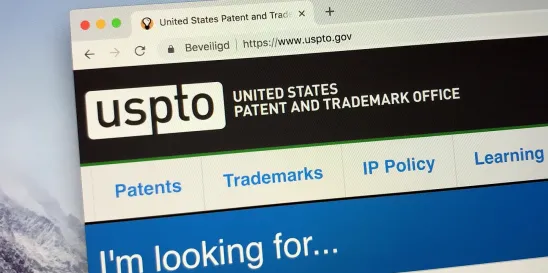The U.S. Patent and Trademark Office (USPTO) has released new training materials on “Declaration practice under 37 CFR 1.132 (Rule 132).” The materials were developed under a collaboration initiative with the U.S. Food and Drug Administration (FDA) to guide patent examiners in the evaluation and treatment of Rule 132 declarations. Stakeholders who rely on such declarations may be able to leverage the guidance to strengthen their submissions and make them more persuasive.
Rule 132 Declarations
The term “Rule 132 declarations” refers to declarations and affidavits submitted pursuant to 37 CFR § 1.132, and are discussed in detail in MPEP § 716 As stated in 37 CFR § 1.132, “any evidence submitted to traverse [a] rejection or objection on a basis not otherwise provided for must be by way of…[a] declaration under this section.” This rule allows applicants to present evidence to overcome an examiner’s rejection or objection. Such declarations may be prepared by inventors, experts, or any other individual “who has knowledge of the facts being asserted.”
Rule 132 declarations can play an important role in patent prosecution because, as stated in MPEP § 716.01, “[t]he arguments of counsel cannot take the place of evidence in the record.” For example, if an applicant wants to present arguments based on topics including (but not limited to) unexpected results, commercial success, solution of a long-felt need, or inoperability of the prior art, those arguments must be supported by a declaration or other evidence.
The Rule 132 Declaration Training Materials
The training materials discuss basic requirements for filing a Rule 132 declaration that are detailed in MPEP § 716. These include that a declaration must be timely filed, signed, and include a “willful false statement” clause (also known as the “jail” clause).
More interesting is the guidance provided on evaluating Rule 132 declarations. The training materials detail how an examiner should consider the purpose of the declaration, what the declaration shows or purports to show, and what types of evidence are presented in the declaration. For example, the training materials highlight the difference between factual evidence and opinion evidence. While both factual evidence and opinions can be included in a Rule 132 declaration, they are to be considered differently by the examiner. The training materials emphasize that opinion evidence that concerns the ultimate legal conclusion at issue” will not be considered. Short of that, both factual and opinion evidence can be used to overcome a rejection. For example, an examiner may consider (factual) comparative test results presented in a declaration to counter an obviousness rejection; the examiner may also consider opinion evidence praising an invention presented in declarations of multiple persons of ordinary skill in the art.
The training materials provide that when a Rule 132 declaration has been submitted, the examiner is to make the “ultimate determination of patentability” based on a “fresh” consideration of the entire record, using a “preponderance of the evidence” standard. According to the materials, “[a]n examiner should not reject a claim if it is ‘more likely than not’ that the claim is patentable.”
Rule 132 Declaration Topics
The training materials discuss in detail seven common reasons for submitting a Rule 132 declaration, many of which are related to overcoming obvious rejections:
- Unexpected results
- Commercial success
- Long-felt need
- Inoperability of references
- Sufficiency of applicant’s disclosure (enablement)
- Establish inherency in the instant application
- Rebut allegations of inherency in the prior art
For example, with regard to unexpected results, the materials state that declarations submitted to support such an argument must include:
- A description of what was tested, including comparisons of the claimed invention with the closest prior art,
- Descriptions of the test conditions to ensure the conditions are commensurate in scope with the claims, and
- The test results and analysis
According to the materials, “[c]onclusory statements such as ‘the prior art invention did not perform well’ without a showing of the actual results of the test performed on the prior art AND the claimed invention is insufficient.” The materials also emphasize that any “unexpected results must be due to the claimed features, not to unclaimed features,” and must be “commensurate in scope” with the claims. On that point, the materials advise examiners to “consider whether there are features which are included in the tests reported in the declaration which are not recited in the claims.”
The materials provide a similar analysis for declarations relating to the other topics noted above, and also provide notes on declarations showing failure of others, skepticism of experts, and copying by others.
Guidance for Practitioners
Although the training materials are officially directed to examiners, they can be a useful tool for applicants and practitioners considering filing a Rule 132 declaration. In addition to outlining many of the formal requirements, they provide helpful information on the details examiners expect to see in different types of declarations, and warnings as to content that may not be sufficient.






 />i
/>i

